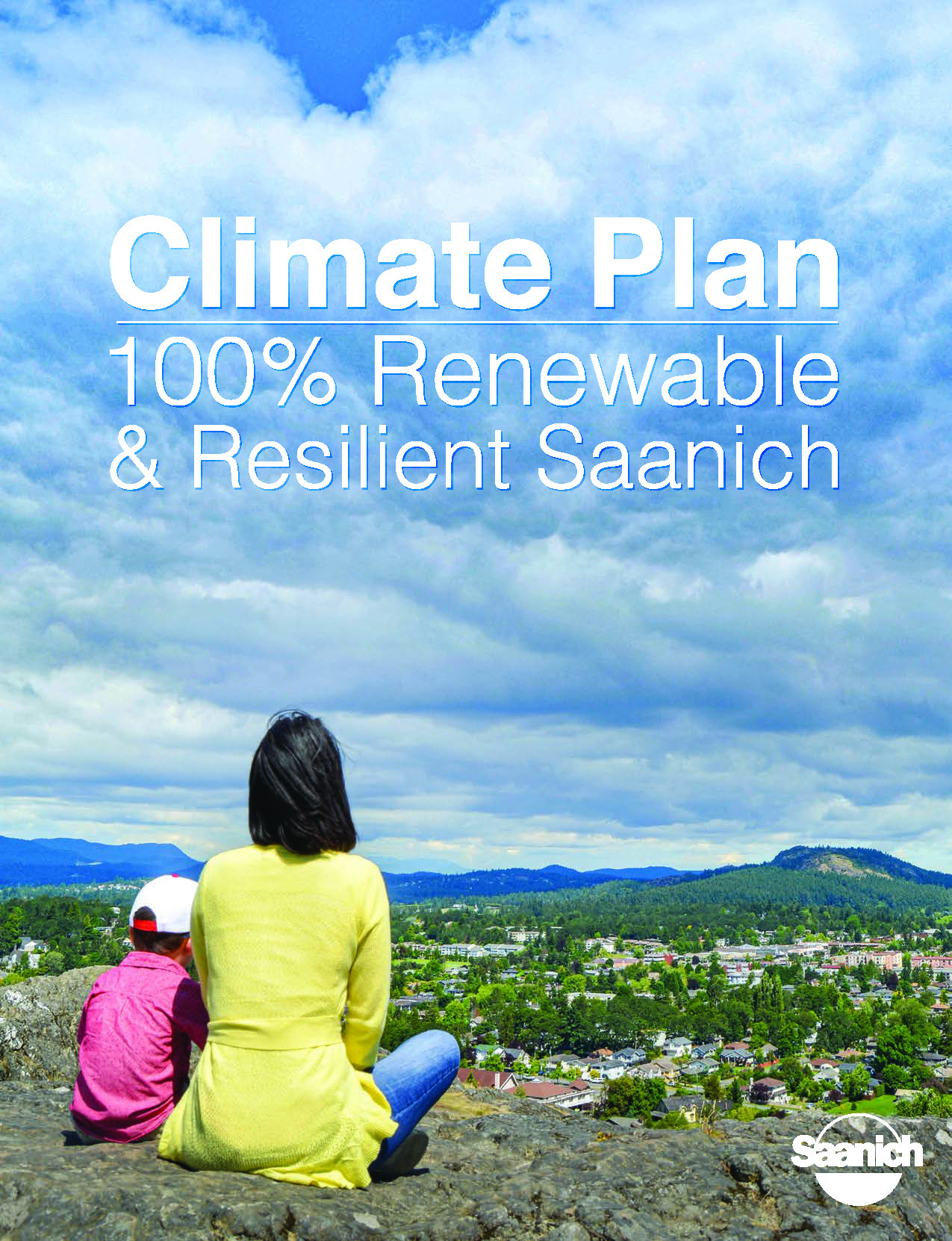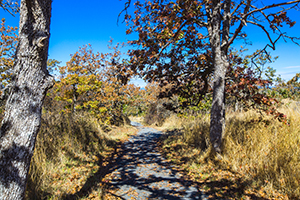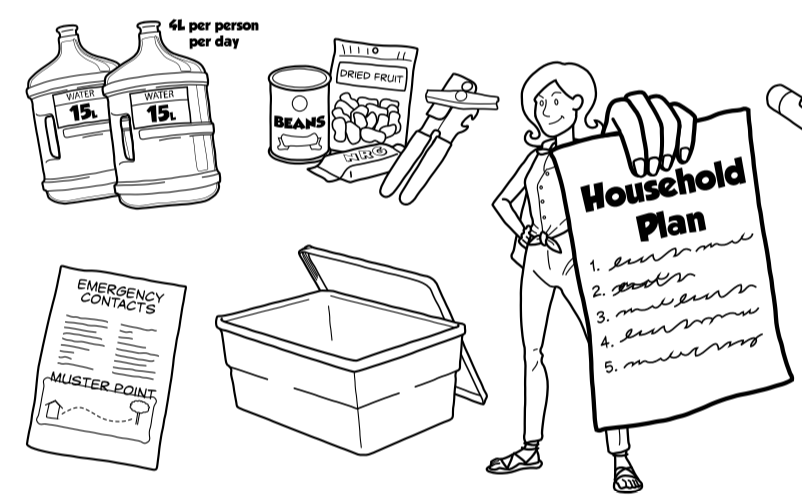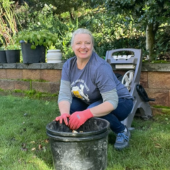Help your neighbourhood become more connected and resilient.
Through the Neighbour to Neighbour Resilience Initiative (N2N) pilot, the District of Saanich supports residents’ projects to address emergency preparedness, climate action, and caring for nature at a neighbourhood scale.
Your neighbourhood group can access a $500 community grant.
- If you already have an idea in mind, you can apply for the grant right away. OR
- If you don’t have a project idea already, you can bring a neighbourhood group together for a workshop series with Saanich staff to help you and your neighbours get to know each other and collaboratively design a project.
Applications will be reviewed on a first-come, first-served basis starting January 1st of each year and are provided based on eligibility, as funds last. It is not a competitive funding process.
1. How to apply for the grant - if you already have a project in mind
- Organize a team of at least two neighbours (including a project leader) within three blocks of each other (this can include separate units in the same building).
- Complete and submit a Grant Application [PDF - 483 KB]
- Meet with Saanich staff to discuss the project, and then implement it!
OR
2. How to apply for the workshops – to bring your neighbourhood group together to design a project together
- Recruit at least three neighbours within three blocks of each other (this can include three separate units in the same building). You can download posters [PDF - 134 KB] and doorhangers [PDF - 38 KB] to help with recruiting your neighbourhood group, or request printed copies by contacting sustainability@saanich.ca.
- Apply as a group using the Group Application form. [DOCX - 24 KB]
- Complete an interactive workshop with Saanich staff to help you form a neighbourhood resilience project.
- Once your group has completed the three workshops, you can choose to complete a Grant Application [PDF - 483 KB]
Resources for Neighbourhood Resilience
Neighbourhood-scale projects that enhance our emergency preparedness, climate action, and care for nature can improve our well-being and resilience. Below are some resources and ideas for your neighbourhood-scale projects. You can also review a summary of completed N2N projects.
Enhancing emergency preparedness
One of the most effective emergency preparedness activities is to connect with your neighbours, because the first people to provide assistance in an emergency are often those nearby.
Connected neighbourhoods respond and recover more quickly and effectively following a disaster. The Saanich Emergency Program has many resources to help you get prepared!
Climate action

Taking climate action at a neighbourhood level can help good ideas spread – this is how the concept of blue boxes emerged a generation ago! Check out the Saanich Climate Plan page to learn about municipal actions and ways you can get involved to reduce our climate impact and prepare for a changing climate.
Caring for nature
Small natural areas within neighbourhoods (such as trees, naturescaped gardens and boulevards) can provide valuable

nature spaces and corridors that improve connections between larger natural areas. Research has shown that spending just two hours a week in nature improves our mental health. Check out the Saanich Parks Natural Intelligence page for lots of great nature ideas!
Neighbourhood Resilience project ideas
If you’re stuck for ideas about your neighbourhood resilience project, check out some of the ideas below, or read about completed N2N projects.
- Host a block party for a cause.
- Complete the Residents' Climate Action Guidebook together. Use the Saanich Carbon Calculator to find out your impact on the planet’s climate. Organize a neighbourhood challenge to inspire your community members to reduce household greenhouse gas emissions.
- Use the Lighter Living Neighbourhood Action Packs to help you take action for the well-being of the planet and your community. In the guide, you'll find fun and inspiring activities you can undertake on your own, with friends and neighbours, or with your whole neighbourhood.
- Borrow the Climate Action to Go Kits from your library with a Thermal Imaging Camera and challenge your neighbourhood to find energy savings all over. (A Nanaimo group did this for their neighbourhood and got great results.)
- Have a “green home” talk or tour of climate-friendly features in your neighbourhood (e.g., who has an e-bike, a heat pump, an electric vehicle, who knows how to do draft proofing etc.).
- Organize a neighbourhood garage sale, clothing swap, little library (on private property), plant or tool swap system.
- Take the Saanich Emergency Program Preparedness 201 course as a neighbourhood group.
- Designate a space and purchase shared neighbourhood emergency supplies.
- Make a neighbourhood heat response plan (e.g., check in on vulnerable neighbours, know who has air-conditioning at home and who doesn’t).
- Make a neighbourhood “Adopt a Storm Drain” pledge.
- Create a community space with preparedness features (e.g., bench with a neighbourhood information board).
- Reduce food waste by setting up systems to share excess food in your neighbourhood.
- Create a Naturescape block or neighbourhood. Wildlife relies on native plant habitats that you can provide in your yard or even in pots on your deck.
- Apply for a boulevard permit to plant a native plant or Naturescape garden.
- Create a pollinator corridor in your neighbourhood. Find out how you can provide plants that attract and support our native butterflies [PDF - 203 KB]. Find out how you can provide habitat for native bees [PDF - 322 KB].
- Organize a neighbourhood session to build and install bird, bat, or bee boxes together. Here are some simple designs: Nestbox for Swallows [PDF - 41 KB] or Chickadees and Nuthatches [PDF - 100 KB]. Also, check out this information about protecting nestboxes from invasive birds [PDF - 227 KB]. Support bats by installing a bat roosting box [PDF - 3 MB]. Find out more about local bats here: community bat programs of BC.
- Consider removing invasive plants from your neighbourhood. See Saanich’s Invasive Species webpages and resources for more information on these weedy species. Or join Saanich’s Pulling Together program.
- Take on a neighbourhood citizen scientist project using iNaturalist- an online social network built on the concept of mapping and sharing observations of biodiversity across the globe. Each Saanich Park has it’s own iNaturalist project that you can add your observations to. Help us build our knowledge of what occurs in our parks.




